Retailers today operate in a complex customer landscape. Expectations are sky-high—consumers want seamless, personalized experiences across email, SMS, chat, ads, and more. But for many mid-market brands, delivering this is still a struggle.
Martech stacks are often underused or ill-suited. Gartner estimates only 33% of marketing tools are fully utilized—thanks to poor data flow, clunky integrations, and tools that don’t scale. The result: fragmented journeys, duplicated effort, and wasted spend.
With 64% of consumers ready to leave after a poor experience, and 79% expecting consistency across channels, the stakes are clear.
Your engagement stack isn’t just a toolkit—it’s a growth engine. Ask yourself:
- Can we launch campaigns in days, not weeks?
- Are we driving repeat purchases, not just one-time sales?
- Are we paying for five tools when three would do?
- Can we evolve with AI, new channels, and real-time triggers?
Bottom line: your stack must balance quick wins (plug-and-play campaigns) with long-term scalability (open APIs, modular tools). Fail here, and you'll pay in lost revenue, rising costs, and stagnant customer experience.
How to Build a Customer Engagement Stack that Works
The key is designing a fit-for-purpose engagement stack, starting with the essentials, layering in intelligence, and leaving room to scale.
A modern customer engagement stack is built from a set of interconnected tools that work together to unify data, orchestrate campaigns, and deliver personalized experiences. At the foundation sits the Customer Data Platform (CDP), which brings together first-party data from POS, e-commerce, and ERP systems to power segmentation. On top of this, CRM platforms like HubSpot or Freshsales track one-to-one interactions and sales pipelines, often linking back to the CDP or email systems.
With the data layer in place, marketing automation tools such as Klaviyo, MoEngage, or Braze manage multi-channel campaigns across email, SMS, push, and social—driven by real-time feeds rather than manual list pulls. To add intelligence, personalization engines like Algonomy or Dynamic Yield use catalog and behavioral data to deliver tailored offers and product suggestions.
To drive repeat business, loyalty and rewards platforms such as Yotpo, Antavo, or Smile.io connect directly with POS and e-commerce systems, ensuring rewards and offers are consistent across channels. Meanwhile, support and helpdesk solutions like Gorgias or Zendesk manage tickets and self-service, relying on order data and CRM records to give agents full context. Finally, survey and feedback tools such as Delighted and Typeform capture customer sentiment and post-purchase insights, feeding back into the engagement loop through email, SMS, or helpdesk channels.
Taken together, these components form the backbone of a customer engagement stack- modular building blocks that retailers can start small with and scale over time, depending on their data maturity and growth priorities. For Example- starting with say, CRM + email and evolving into a fully integrated loop with loyalty triggers, VoC, and AI-driven next-best offers.
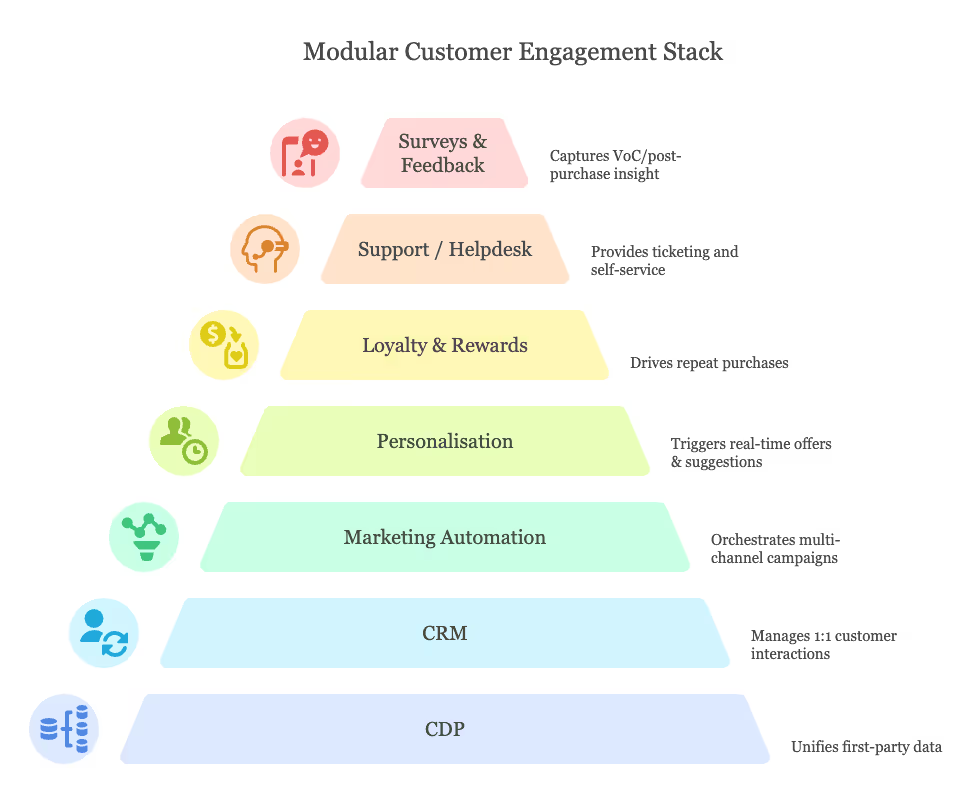
The Trade-Offs
Every engagement stack is a story of trade-offs. Here’s where the hard choices lie:
Bundled Suite vs Best-of-Breed: Suites like HubSpot offer fast setup but lack depth in loyalty or personalization. Most brands start bundled and modularize after ~$50M in revenue.
Time-to-Value vs Future Scale: Templates help you launch fast, but extensibility matters if you operate across brands, geographies, or catalogs.
Data Ownership vs Lock-In: Platforms like Salesforce CDP limit schema control and charge for exports. Tools like Segment or Meiro offer open models and easier warehouse alignment.
Ease-of-Use vs Customization: No-code tools help marketers move fast, but advanced use cases (e.g., real-time triggers) often need SQL, APIs, and engineering.
Evaluation Framework
Features don’t equal fit. The smartest buyers go beyond feature checklists—they score tools on how well they integrate, scale, and align with real-world execution.
Use this 8-point scorecard (1–5 scale) to assess your next engagement platform:
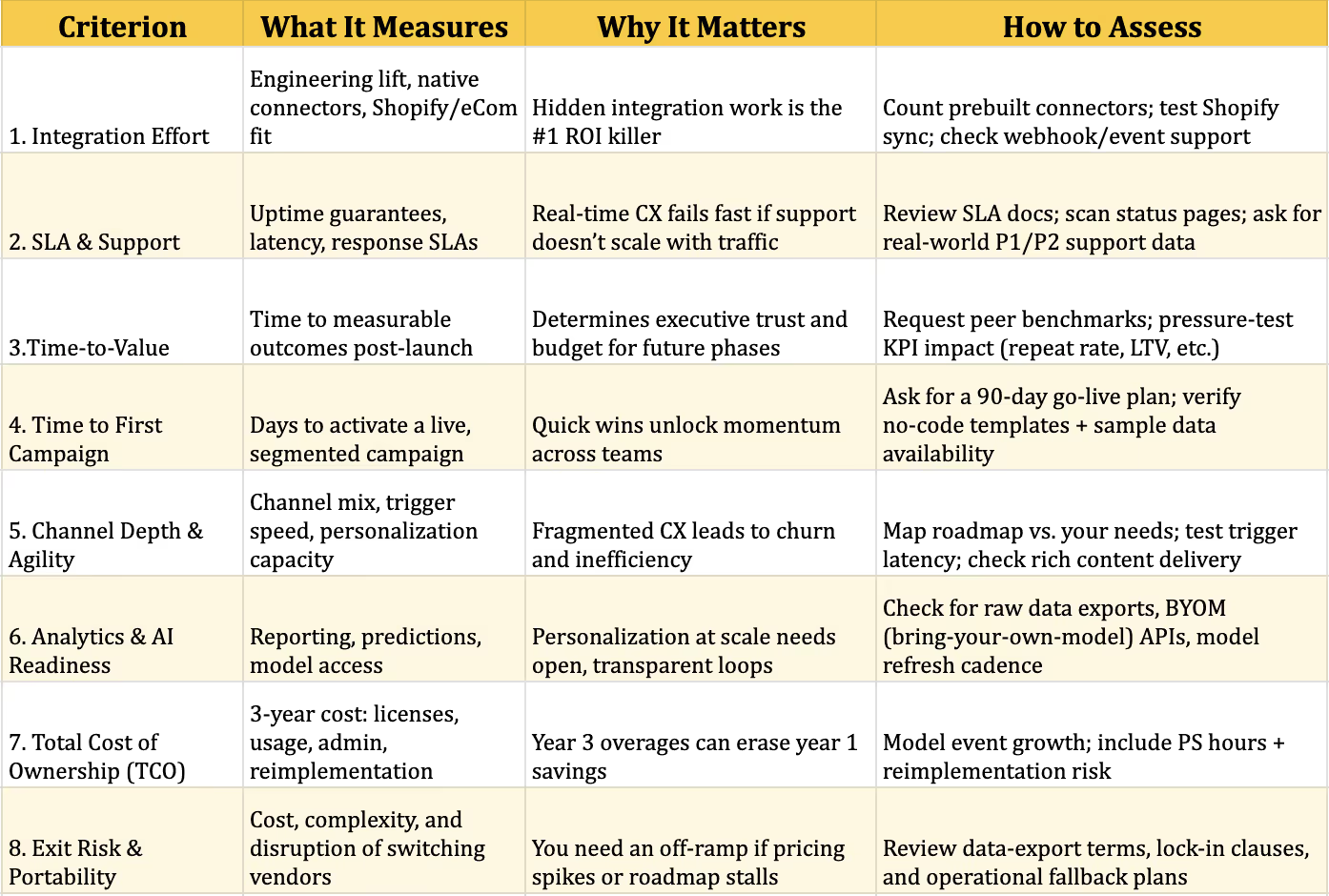
Buyer Checklist: Pressure-Test Before You Buy
Before you shortlist a CRM, CDP, marketing automation, loyalty, or support tool, run through these 10 questions with your vendor and internal team:
- Data Coverage
Can it unify POS, eCom, loyalty, and support data—without middleware? - Integration Effort
How many native connectors exist? How long to wire the rest? - Time to First Campaign
Can marketers launch a segmented campaign in <90 days without engineering? - SLA & Performance
Is 99.9% uptime, sub-5s latency, and breach credit guaranteed? - Channel Depth
Does it support your top channels (email, SMS, WhatsApp, ads)? Is the roadmap aligned? - AI & Analytics
Can you export raw events, bring your own ML models, and access dashboards? - Total Cost of Ownership
Is Year 3 still sustainable after licenses, usage, and admin effort? - Data Ownership
Can you export customer data (with IDs) without penalty? - Compliance & Governance
Is it GDPR/CCPA/SOC 2 compliant with role-based access? - Vendor Health
Is the vendor stable and aligned with your roadmap?
Final Guidance by Scenario
Your ideal engagement stack depends on business size, complexity, and channel mix. Use this cheat sheet to align with your current needs:

Takeaway
You don’t need a “perfect” stack- just the right one for where you are today.
Use bundled suites for foundational tasks like data unification and campaign delivery—they're easier to manage. Go modular where it counts: personalization engines, loyalty, and AI layers that shape CX and drive LTV.
Golden rule: Build around revenue levers, not vendor hype. Own your data.
Next Steps
Audit your current stack against the framework above. Identify gaps, pressure-test your tools, and align around near-term revenue impact.
Start lean. Prove ROI. Then scale with confidence.
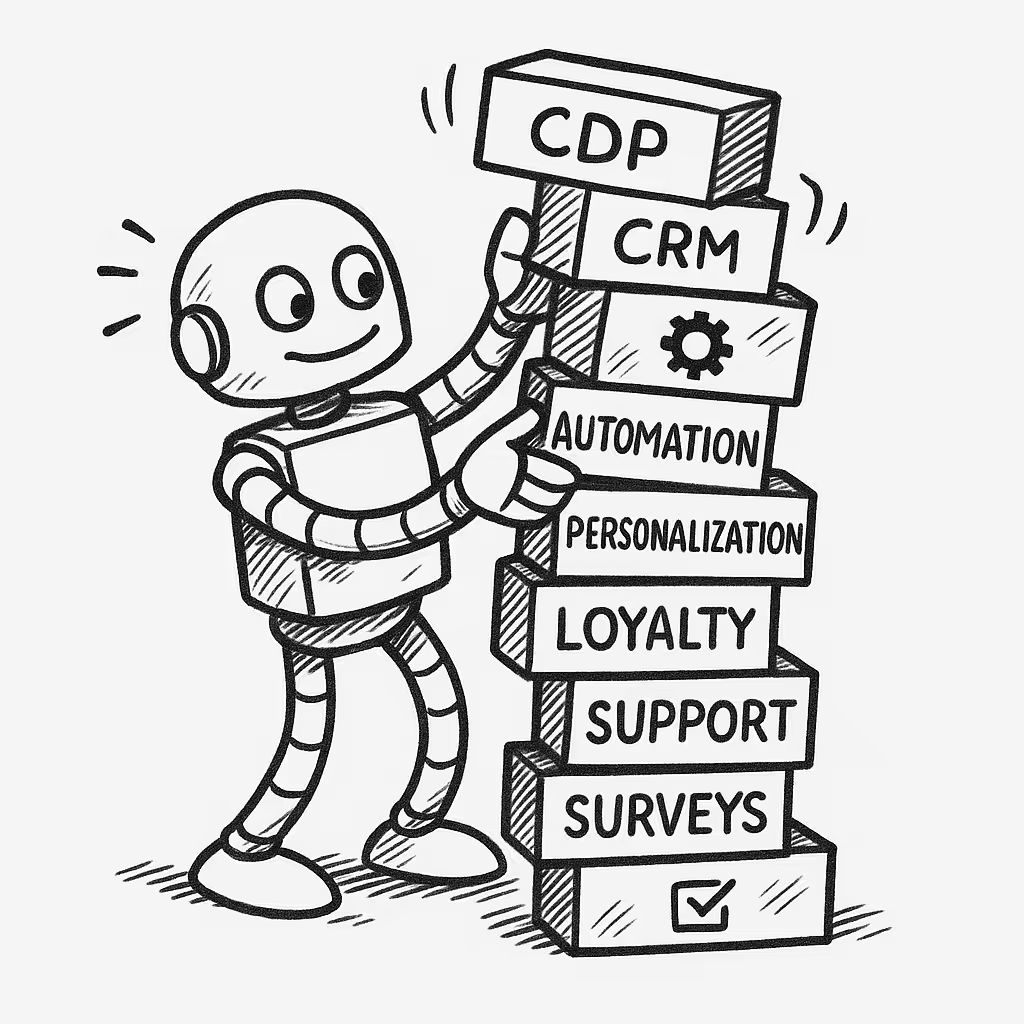

.avif)
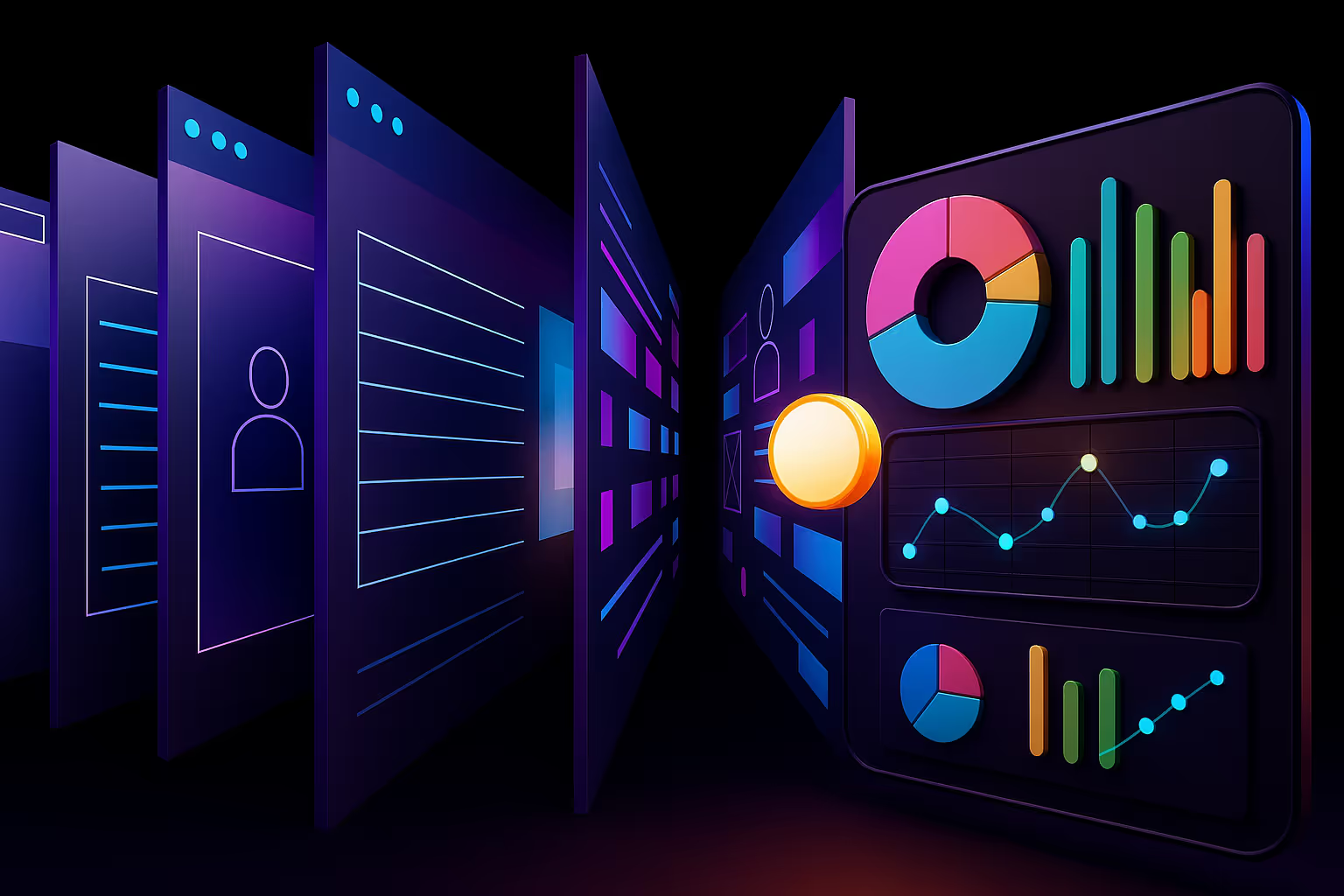
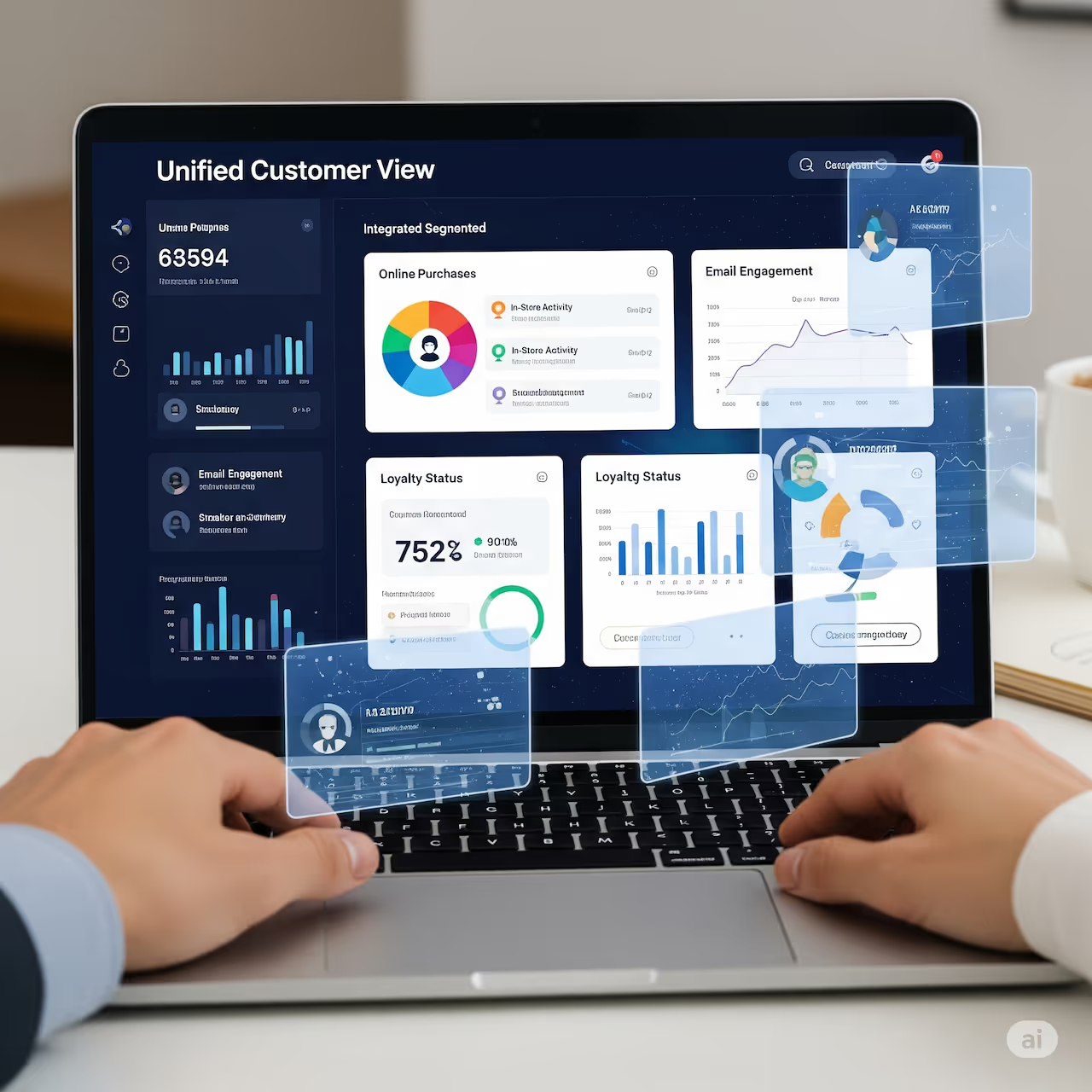
.avif)